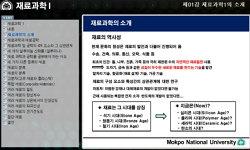A friction stir welded (FSW-ed) C70600 alloy plate was partially welded to other C70600 alloy plate by the gas tungsten arc welding (GTAW). First, FSW was performed on the C70600 alloy by 2-steps (on the top and the bottom). The ultimate tensile stren...
http://chineseinput.net/에서 pinyin(병음)방식으로 중국어를 변환할 수 있습니다.
변환된 중국어를 복사하여 사용하시면 됩니다.
- 中文 을 입력하시려면 zhongwen을 입력하시고 space를누르시면됩니다.
- 北京 을 입력하시려면 beijing을 입력하시고 space를 누르시면 됩니다.
https://www.riss.kr/link?id=A105302983
- 저자
- 발행기관
- 학술지명
- 권호사항
-
발행연도
2018
-
작성언어
English
- 주제어
-
등재정보
KCI등재
-
자료형태
학술저널
- 발행기관 URL
-
수록면
60-66(7쪽)
- DOI식별코드
- 제공처
- 소장기관
-
0
상세조회 -
0
다운로드
부가정보
다국어 초록 (Multilingual Abstract)
A friction stir welded (FSW-ed) C70600 alloy plate was partially welded to other C70600 alloy plate by the gas tungsten arc welding (GTAW). First, FSW was performed on the C70600 alloy by 2-steps (on the top and the bottom). The ultimate tensile strength after FSW was average 317MPa very close to that (average 324MPa) of GTAW-ed C70600 joint. The bending test results after FSW varied by the welding condition. Case A failed the bending test according to the ASME code (ASME Sec. Ⅸ) at the face bending because of relatively lower heat input (rotation speed/traveling speed was 600rpm / 200mm/min) while Case B (higher heat input; rotation speed/traveling speed was 1200rpm / 200mm/min) met the requirements. There were characteristic microstructures such as black-arc-arrays of the oxides in the FSW stir zone (SZ) and the micro-pores in the boundary between FSW-SZ and GTAW weld metal (WM). The former was originated from the crushed and stirred oxides which pre-existed on the base metal surface. The latter could result from re-gasified O2 gas formed by Cu oxides melted at the boundary between FSW-SZ and GTAW-WM.
목차 (Table of Contents)
- Abstract
- 1. Introduction
- 2. Experimental Procedure
- 3. Result and Discussion
- 4. Summary
- Abstract
- 1. Introduction
- 2. Experimental Procedure
- 3. Result and Discussion
- 4. Summary
- References
동일학술지(권/호) 다른 논문
-
SA-516 Grade 70 탄소강 재현 용접 열 영향부의 기계적 특성과 미세조직에 미치는 용접후열처리 온도의 영향
- 대한용접·접합학회
- 박소영(So-Young Park)
- 2018
- KCI등재
-
딥러닝(Deep Learning)을 이용한 GMA 용접에서 이면비드 생성 유무 판단 알고리즘에 관한 연구
- 대한용접·접합학회
- 김민석(Min Seok Kim)
- 2018
- KCI등재
-
용접 자세에 따른 해양구조물용 항복강도 420MPa급 고강도강 FCA 용접부 파괴인성에 대한 연구
- 대한용접·접합학회
- 김인찬(In-Chan Kim)
- 2018
- KCI등재
-
- 대한용접·접합학회
- H. K. Narang
- 2018
- KCI등재





 KCI
KCI DBpia
DBpia







